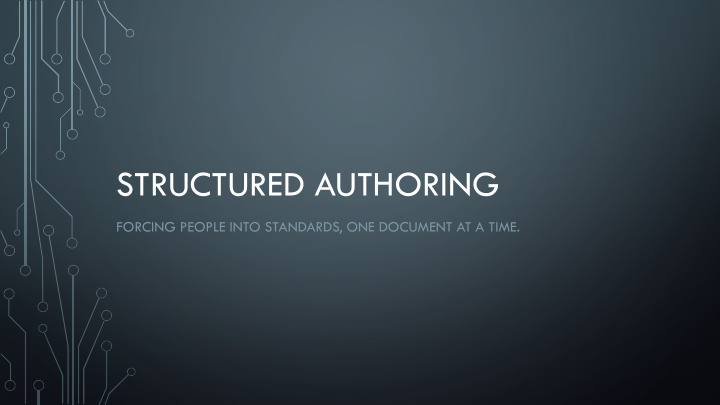



STRUCTURED AUTHORING FORCING PEOPLE INTO STANDARDS, ONE DOCUMENT AT A TIME.
UNSTRUCTURED & STRUCTURED AUTHORING • Microsoft Word documents or • “A publishing workflow that lets you Google Docs define and enforce consistent organization in documents” • Formatting applied by the author • XML & DTD (we’ll get to that soon!) • Reuse occurs via copy-and-paste or re-creation • Formatting controlled by programming, differentiated by • Static, locked in format purpose in document.
XML & DTD Extensible Markup Language (XML) Document Type Definitions (DTD) • Think of it as the cousin of HTML, • Provides the actual structure for the except you get to choose what the document, outlines which order the tags are. elements can take. • A document is only valid/usable if it matches its corresponding DTD
IN OTHER TERMS
WHY STRUCTURED AUTHORING? • Output into multiple file formats (in both a user guide and online help, for instance) • Control formatting of documents, eliminating error or personal preferences • Creates inherent workflow
WORKFLOW ROLES • Document Architect: defines and • Writer: creates content, may fill the implements the structure; identifies role of template designer information types • Technical editor: focuses on word • Template Designer: establishes the choice, grammar, organization look of content deliverables rather than developmental edit
TOOLS OF THE TRADE • Adobe FrameMaker • Quark • MadCap Flare • (and many more XML editors)
WHY IS THIS USEFUL TO CONTENT MANAGERS? • Streamlining & content automation • Reduces the time spent making content • Improves quality and consistency • Reduces costs • Facilitates compliance
Recommend
More recommend